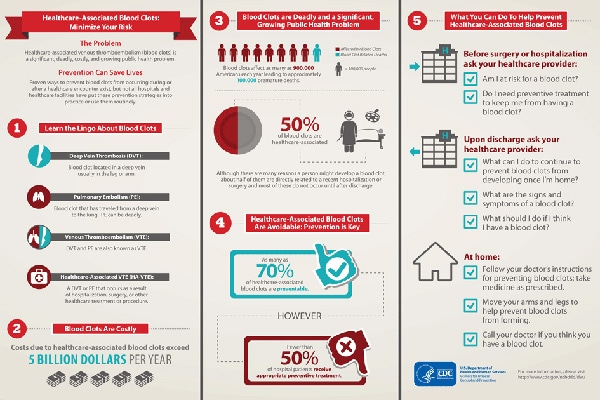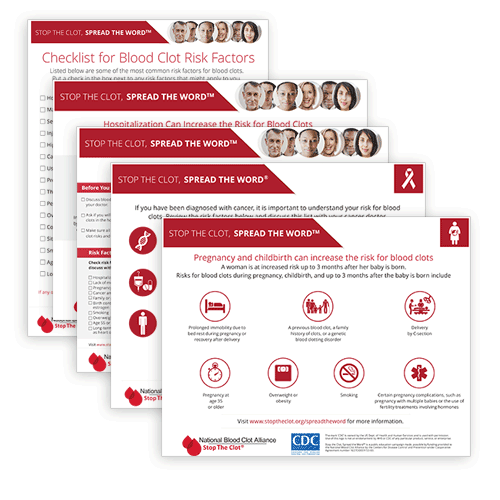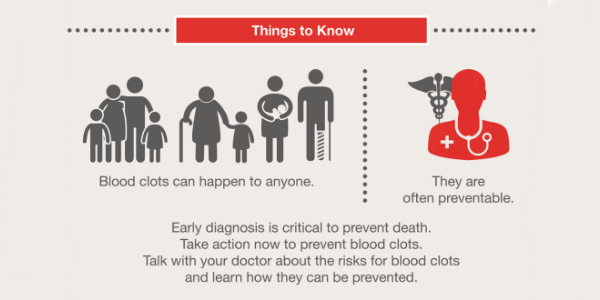Uncover the silent threat of DVT: Learn the telltale signs, surprising lifestyle factors, and simple prevention strategies today!
Table of Contents
- Introduction to DVT
- What is Deep Vein Thrombosis?
- Signs & Symptoms
- Why Should We Care About Blood Pressure?
- The Risk Factors of DVT
- Preventing Deep Vein Thrombosis
- Asking for Grown-Up Help
- Cool Tech and Treatments
- Daily Tips for Happy Veins
- Quiz Time: What Have We Learned?
- Conclusion: Being a DVT Detective
- Frequently Asked Questions (FAQs)
Introduction to DVT
In this blog post, we are going to dive into the topic of “deep vein thrombosis”, also known as DVT, and discover how it is connected to keeping our legs healthy. Understandably, terms like deep vein thrombosis might sound a bit scary, but fear not, we will break it down in a simple and friendly way so that you can easily understand.
When we talk about deep vein thrombosis, we are referring to a condition where a blood clot forms in a vein deep inside the body, often in the legs. This can lead to discomfort, pain, and other health issues if not addressed. So, by learning about DVT and how to take care of our legs, we can help prevent any potential problems down the road.
Let’s start this exciting journey into the world of leg health and learn how to keep our veins happy and healthy!
What is Deep Vein Thrombosis?
Deep vein thrombosis may sound like a big, scary term, but let me break it down for you in simpler words. Imagine our bodies are like a big city with highways running through them. These highways are like our veins, and they play a crucial role in keeping us healthy.
Understanding Your Veins
Just like cars need highways to travel from one place to another, our blood needs veins to move around our bodies. These veins carry oxygen and nutrients to all parts of our body, ensuring everything works properly.
The Clog in the System
Sometimes, a blood clot can form in our veins, causing a traffic jam in our body’s highways. This clot can block the flow of blood, making it hard for our bodies to get the oxygen and nutrients they need. This blockage is what we call deep vein thrombosis.
Signs & Symptoms
Deep vein thrombosis, or DVT, can show some warning signs that something might not be right in our bodies. Let’s learn about these signs so we can understand them better.

Image courtesy of www.facebook.com via Google Images
Leg Pain or Swelling
One of the common signs of DVT is having pain or swelling in one of our legs. It might feel like a pulled muscle or a strange tightness that doesn’t go away easily. So, if you notice one of your legs looking or feeling different than usual, it’s essential to tell a grown-up about it.
Red or Warm Skin
When a part of our skin suddenly turns red or feels warm to the touch, it can also be a sign of DVT. This change happens because of the way the blood flow is affected by a clot in our veins. If you see your skin turning red or feeling warmer than the rest of your body, it’s a clue that you need to share with a grown-up.
Shortness of Breath
Sometimes, a blood clot caused by DVT can break loose and move to the lungs, making it harder to breathe. So, if you ever feel like you can’t catch your breath, no matter how much you try, it’s crucial to talk to a grown-up right away. They can help figure out what’s causing this and guide you on what to do next.
By being aware of these signs of DVT and speaking up if you experience any of them, you can help keep your legs healthy and your body safe.
Why Should We Care About Blood Pressure?
Do you know what blood pressure is? It’s like the force pushing blood through your body, just like water flowing through a garden hose. Imagine if the water pressure was too high or too low in the hose – that wouldn’t be good for the plants, right? Well, the same goes for your body!
Blood Pressure Basics
High blood pressure, also known as hypertension, means there’s too much force pushing on your blood vessels, which can be harmful. On the other hand, low blood pressure, or hypotension, means there isn’t enough force, which can also cause problems.
Why It Matters
Just like plants need the right amount of water pressure to grow properly, your body needs the right blood pressure to stay healthy. If your blood pressure is too high, it can strain your heart and blood vessels, leading to serious health issues. And if it’s too low, your body might not get enough oxygen-rich blood.
Keeping your blood pressure in check is essential for your overall well-being. So, next time you visit the doctor, pay attention when they check your blood pressure – it’s like a report card for your heart and blood vessels!
The Risk Factors of DVT
Deep vein thrombosis, or DVT, may sound like a big, scary term, but there are certain things that can make it more likely to happen. Let’s take a look at some of the risk factors that can increase the chances of developing DVT.

Image courtesy of www.cdc.gov via Google Images
Factors that Increase the Risk
One major risk factor for DVT is sitting still for long periods of time, like when you’re on a long car ride or sitting through a movie marathon. This can slow down the blood flow in your legs and make it easier for clots to form. Another risk factor is when you’re not moving around enough, which can happen if you’re spending too much time playing video games or watching TV without taking breaks to stretch and move.
Being overweight or obese can also raise the risk of DVT, as carrying extra pounds puts more pressure on your veins. Additionally, some medical conditions, like certain types of cancer or heart disease, can make blood more likely to clot, increasing the chances of DVT.
How to Lower the Risk
To lower your risk of DVT, it’s important to stay active and move around regularly. Playing sports, dancing, or simply going for a walk can help keep your blood flowing smoothly. Eating healthy foods that are good for your veins, like fruits and vegetables, can also make a big difference in preventing DVT.
Remember, keeping your legs healthy and active is key to reducing the risk of DVT. By taking care of your body and staying active, you can help prevent DVT and keep your veins happy and healthy!
Preventing Deep Vein Thrombosis
As brave knights on a quest to keep our legs healthy and strong, we must learn how to prevent the villain known as deep vein thrombosis (DVT). Just like protecting a castle from dragons, we can defend our veins by following these fun and simple tips!
Staying Active and Moving
To keep our blood flowing smoothly through our veins, it’s important to stay active and not sit still for too long. Just like knights training for battle, we can play active games like tag, jump rope, or even dance parties to pump up our blood flow and lower the risk of DVT.
Yummy Foods for Healthy Blood Flow
Imagine that our veins are like streams that need clean water to flow smoothly. By eating healthy snacks and meals like fruits, veggies, and whole grains, we can give our veins the power-ups they need to stay healthy. Drinking lots of water is also key to keeping our blood flowing smoothly!
Asking for Grown-Up Help
When it comes to taking care of our bodies, sometimes we need to ask for grown-up help, just like how superheroes call in their team for backup. If you or someone you know is experiencing symptoms that might be related to deep vein thrombosis (DVT), it’s important to talk to an adult you trust.

Image courtesy of www.cdc.gov via Google Images
Knowing When to Seek Help
If you notice swelling, pain, or redness in your legs that doesn’t go away, it’s time to talk to a grown-up. They can help you understand what’s going on and figure out the best course of action to take care of your leg health. Don’t be afraid to ask questions or share how you’re feeling!
Talking to a Doctor
If your symptoms don’t improve or if you’re worried about DVT, a doctor is the best person to help. They have the knowledge and tools to diagnose any issues and provide the right treatment. Remember, it’s always better to be safe and ask for help when you need it.
Cool Tech and Treatments
When it comes to battling deep vein thrombosis, our healthcare superheroes use some pretty cool tech and treatments to help save the day. Let’s dive into the awesome world of cutting-edge medical gadgets and savvy skills that doctors use to fix clogs in our veins.
| DVT Facts | Symptoms | Prevention |
|---|---|---|
| DVT Definition | Leg pain, swelling, red or warm skin, shortness of breath | Regular movement, wear compression stockings, stay hydrated |
| Who is at Risk? | Individuals over 60, pregnant women, smokers, obese individuals | Avoid sitting for long periods, exercise regularly, maintain a healthy weight |
| Complications | Pulmonary embolism, post-thrombotic syndrome | Take blood thinners as prescribed, elevate legs, use compression devices |
Exploring Innovative Tools
Imagine a doctor with a magical wand that can zap away blood clots in an instant! While it may not be exactly like a wizard’s wand, doctors have tools like catheters and stents that can help clear blockages in our veins and improve blood flow. These tools are like superhero weapons in the fight against deep vein thrombosis!
Cutting-edge Treatments
Doctors also have incredible treatments like thrombolytic therapy, where special medications are used to dissolve blood clots and restore healthy blood flow. It’s like sending in a team of tiny cleaning crew members to break down and clear out the clogs in our veins, allowing them to work smoothly again.
Another amazing treatment is the use of compression stockings, which are like cozy socks that help apply pressure to our legs, promoting healthy blood circulation and preventing blood clots from forming. It’s a bit like giving our legs a gentle hug to keep them happy and healthy!
With these fantastic tools and treatments, our healthcare heroes can work wonders in keeping our veins clear and our blood flow running smoothly, ensuring that deep vein thrombosis doesn’t stand a chance!
Daily Tips for Happy Veins
Having healthy and happy veins is super important to keep our bodies running smoothly. Here are some fun and easy tips to make sure your veins stay cheerful every day:

Image courtesy of www.cdc.gov via Google Images
Proactive Movement
Make sure to stay active and keep moving throughout the day. Whether it’s playing tag with friends, riding your bike, or dancing to your favorite song, staying active helps keep your blood flowing and prevents blood clots.
Nourishing Foods
Eat yummy foods that are good for your veins! Snack on fruits like oranges and berries that are rich in vitamin C, which helps strengthen your blood vessels. Veggies like broccoli and spinach are also great for promoting healthy blood flow.
By following these simple tips, you can ensure that your veins stay happy and healthy, ready for all the fun adventures your body takes on every day!
Quiz Time: What Have We Learned?
Alright, little detectives, it’s time to put your knowledge to the test and see how much you’ve learned about deep vein thrombosis (DVT) and how to keep your legs healthy. Get ready for a fun quiz!
Question 1:
What does DVT stand for?
A) Deep Venus Tortoise
B) Deep Vein Thrombosis
C) Dizzy Virtual Tornado
Question 2:
How can you compare veins to in order to understand how they work?
A) Rivers
B) Highways
C) Trails
Question 3:
What can having too much or too little blood pressure be compared to?
A) A fire
B) Water flow in a garden hose
C) A feather
Great job, detectives! Keep up the good work in learning how to prevent DVT and take care of your leg health. Until next time!
Conclusion: Being a DVT Detective
Now that you know all about deep vein thrombosis and how important it is to keep our legs healthy, it’s time to put on your detective hat and become a DVT detective! Your mission, should you choose to accept it, is to be on the lookout for any signs that someone might have DVT and to help prevent it in yourself and others.

Image courtesy of www.pinterest.com via Google Images
Become an Awareness Advocate
Spread the word about DVT and the importance of leg health to your friends and family. By raising awareness, you can help others learn how to stay safe and healthy.
Stay Active and Alert
Keep moving and stay active to keep your blood flowing smoothly. Remember, being a DVT detective means taking care of your body and looking out for any warning signs that something might not be right.
Healthy Habits for Happy Veins
Eat nourishing foods, drink plenty of water, and make sure to take breaks when sitting for long periods. These simple habits can go a long way in preventing DVT and keeping your veins happy and healthy.
With your newfound knowledge and a little detective work, you can be a superhero for your own health and the health of those around you. Remember, being a DVT detective is all about being proactive, informed, and ready to take action to keep yourself and others safe from this sneaky condition.
Frequently Asked Questions (FAQs)
What is Deep Vein Thrombosis?
Deep Vein Thrombosis, or DVT for short, is like a traffic jam in the highways of our body, preventing blood from flowing smoothly in our veins. It’s essential to keep our veins healthy to avoid this issue.
Why Should We Care About Blood Pressure?
Imagine your veins are like hoses in a garden. Too much pressure (high blood pressure) or too little (low blood pressure) can harm the plants (our bodies). We want just the right balance for everything to work properly.
How Can We Prevent Deep Vein Thrombosis?
To prevent DVT, you can play fun games that get you moving and eat yummy foods that keep your veins strong. Staying active and eating well are like armor against the clogs in your body’s highways.
What Are Some Signs of Deep Vein Thrombosis?
If your legs hurt, swell, or feel warm, it could be a sign of DVT. Always tell a grown-up if you have any of these symptoms, just like calling for superheroes when there’s trouble.
What Are Some Risk Factors for Deep Vein Thrombosis?
Sitting still for too long, like when binge-watching shows, or not moving much can increase the chances of getting DVT. That’s why it’s important to keep active and not stay in one spot for too long.





